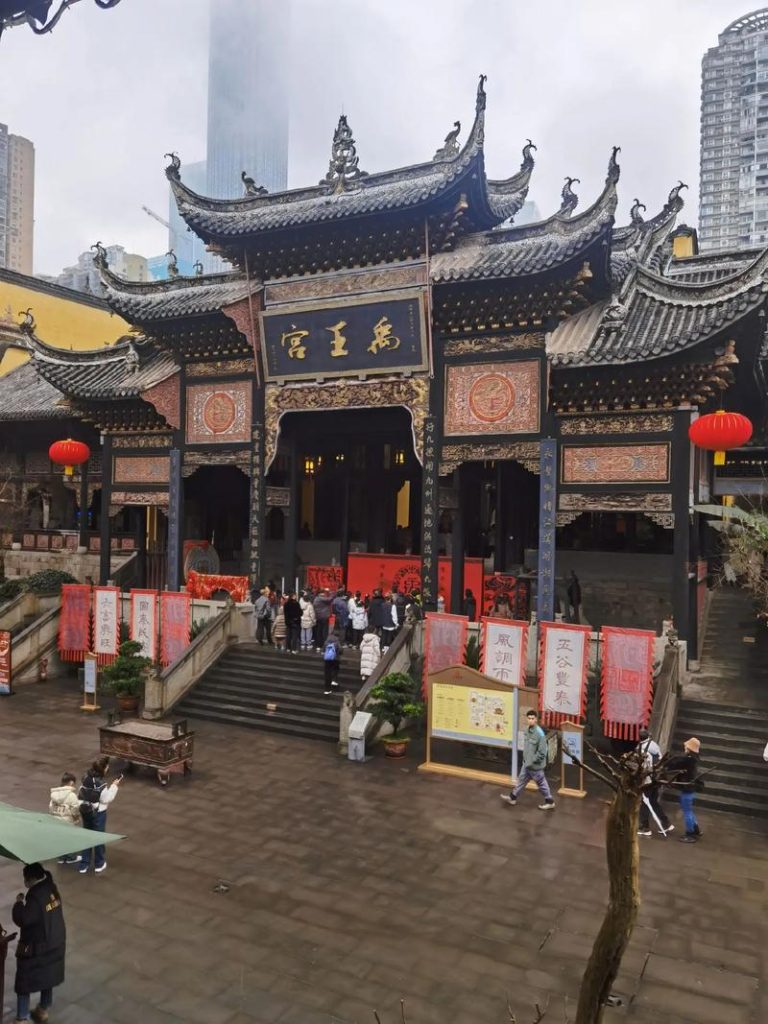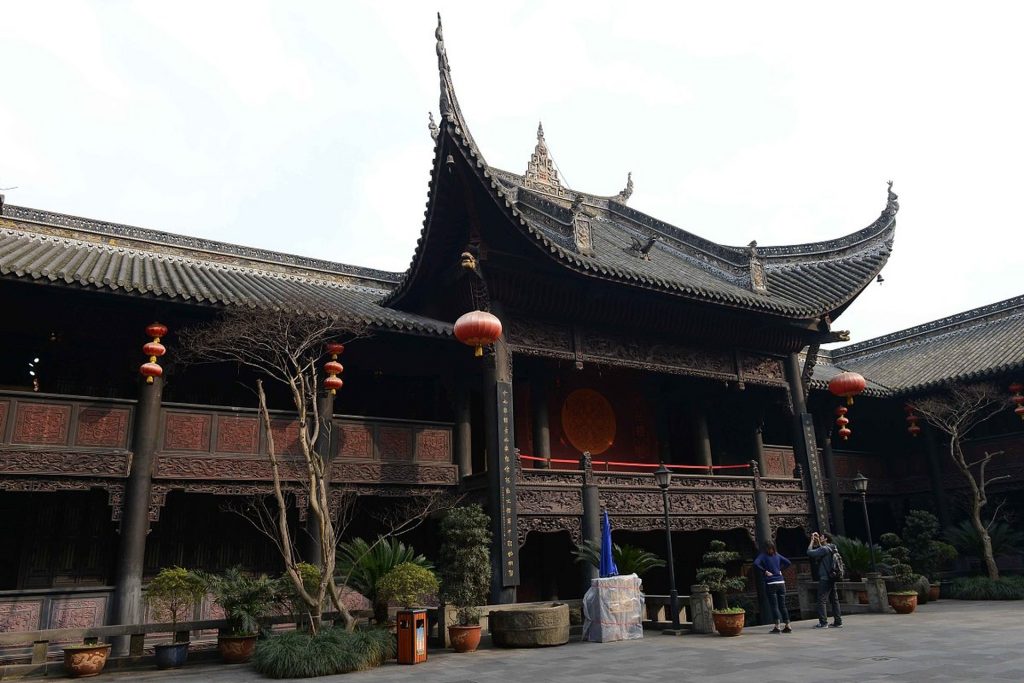History
The Chongqing Huguang Huiguan, located in the center of Chongqing, is a monument of great historical value. Its origins can be traced back to the Kangxi period of the Qing Dynasty, when it was born in the midst of a massive wave of emigration from the Hukuang region (roughly equivalent to the present-day Hukuang region) to the Sichuan province. During that wave, people from the Huguang region (roughly equivalent to the present-day provinces of Hubei and Hunan) migrated to Sichuan, including Chongqing. After settling down, the immigrants built this guild house to serve as a place for fellow villagers to meet, worship, and conduct business.
Over time, from the Daoguang period to the Guangxu period of the Qing Dynasty, the Hukuang Guild Hall was expanded, rebuilt and renovated. During that period, it reached its peak of prosperity and became a lively center of activity for immigrants, symbolizing their strong sense of community and cultural heritage.
Architectural Wonders
Layout and Design
The layout of the Hukuang Guild Hall is a harmonious blend of various architectural styles. It is built against the mountains, skillfully adapting to the natural topography of Chongqing’s mountainous region. The buildings are staggered and well organized, with each structure mirroring the other. The main hall, side halls and pavilions are connected to each other through winding corridors, forming a labyrinthine yet charming space.
Exquisite Carvings
One of the most striking features of the Guild Hall is its exquisite carvings. Beams, columns, doors and windows are decorated with intricate relief and openwork carvings. The themes of these carvings are rich and varied, ranging from mythological stories like Journey to the West and The Story of the Western Chamber to historical legends. There are also many animal motifs such as dragons and phoenixes that symbolize good fortune and power, as well as various plant motifs that represent vitality and beauty. These carvings are not only decorative, but also reflect the rich cultural connotation and high level of craftsmanship of that era.

Main Buildings
Yuwang Palace
Yuwang Palace is the main and largest building in the Huguang Hall, accounting for about one-third of the entire complex. It was built to honor Yu, the mythical Chinese ruler of water. It was first built during the Kangxi period and further expanded in the 26th year of the Daoguang period. The palace is grand in scale, with flying eaves and arches, imposing and beautifully decorated interiors, showing the immigrants’ respect and admiration for Dayu.
Guangdong Public Hall (Nanhua Palace)
Also known as the Guangdong Guild Hall, it was built by the Guangdong people who lived in Chongqing. Its main structure adopts a quadrangle layout, with the four characters “Nanling Guanzhan” engraved on the lintel of the main door, and “Yuezhi” and “Chuanchun” engraved on the doors on both sides respectively. This building not only served as a gathering place for Guangdong immigrants, but also preserved the unique architectural style of Guangdong.
Qi’an Public Office (Huangzhou Pavilion)
Commonly known as “Huangzhou Pavilion” or “Emperor’s Palace”, it was built in Chongqing by people from Huangzhou, Hubei. It is symmetrically distributed along the central axis and is the best-preserved building in the Hukuang Guild Hall complex. Its solemn and elegant appearance reflects the unique cultural characteristics of the Huangzhou region.

Cultural Significance
Historical Inheritance
Chongqing Huguang Huiguan Hall is a vivid testimony to the commercial prosperity of Chongqing during the Qing Dynasty. It represents the important role played by immigrants in the economic and cultural development of Chongqing, and is also an important symbol of immigrant culture, commercial culture and architectural culture from the early Qing Dynasty to the early Republic of China.
Artistic Treasure
As a representative of southern China’s architecture during the Ming and Qing dynasties, the Huguang Guild Hall demonstrates the outstanding architectural art of the time. Its unique design, exquisite carvings and harmonious layout are not only the pride of the Chinese people, but also the admiration of the world.

A Window into Immigrant Culture
The Museum of Immigration, which was built in 2005 on the premises of the Chinese Embassy in Beijing, vividly illustrates the historical events of this mass immigration. Through multimedia displays and real-life reconstructions, visitors can truly feel the immigrants’ arduous journey and determination. It opens a window for foreigners to understand this important chapter of China’s history.
In short, Chongqing Huguang Hall is not only a building, but also a treasure house of history, culture and art. It looks forward to welcoming you inside to explore the fascinating world of ancient Chinese culture and history.
